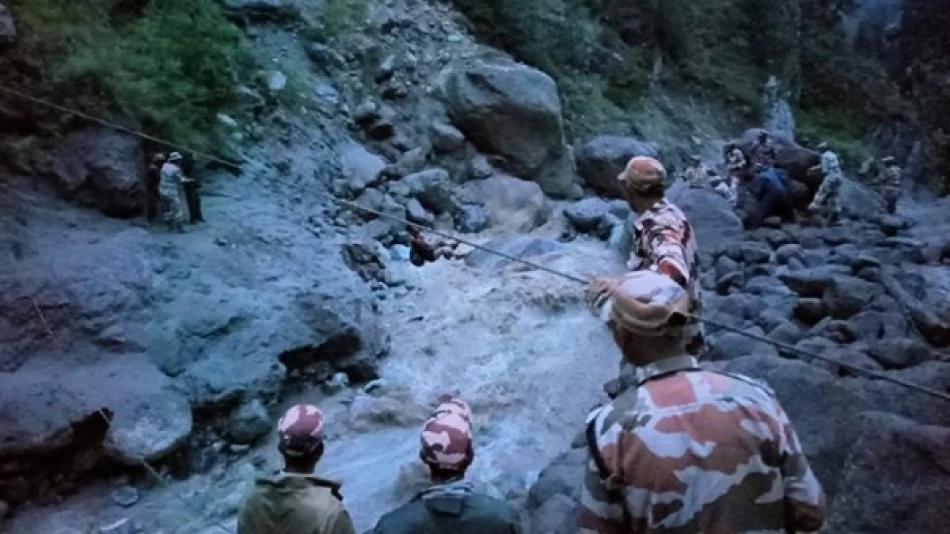
Heavy Rains and Landslides Hamper Rescue Efforts in India
Himalayan Disaster Exposes India's Infrastructure Vulnerability as Rescue Teams Battle Nature's Fury
Heavy monsoon rains and landslides have paralyzed rescue operations in India's mountainous Uttarakhand state, leaving dozens missing and highlighting the region's chronic vulnerability to extreme weather events. The disaster, which has claimed at least four lives, underscores the growing challenge of climate-induced emergencies in the ecologically fragile Himalayan region.
Rescue Operations Hampered by Geographic Isolation
Military rescue teams and disaster response units struggled to reach the remote village of Dharali on Wednesday, as continuous heavy rainfall triggered fresh landslides that blocked critical transportation arteries. The closure of a major highway has effectively cut off access to affected areas, forcing authorities to rely on satellite phones after floodwaters swept away mobile towers and power infrastructure.
Colonel Harshavardhan, leading the Indian Army's rescue operations, acknowledged the scale of uncertainty facing emergency responders. "The number of missing persons is unknown, but relief efforts continued throughout the night. We are trying to rescue people and move them to safety," he stated on social media.
Uttarakhand's Recurring Climate Crisis
This latest disaster adds to Uttarakhand's troubling pattern of weather-related emergencies. The state, which houses significant portions of the Himalayan glacier system, has experienced increasingly frequent flash floods and landslides over the past decade. The 2013 Kedarnath floods killed over 5,000 people, while the 2021 Chamoli disaster highlighted the region's vulnerability to glacial lake outbursts and infrastructure failures.
The state's geography creates a perfect storm of risk factors: steep terrain, deforestation from development projects, and changing precipitation patterns that concentrate rainfall into shorter, more intense periods. These conditions make traditional rescue and evacuation protocols increasingly inadequate.
Infrastructure Gaps Complicate Emergency Response
The destruction of communication networks during the current crisis exposes a critical weakness in India's disaster preparedness. Unlike countries such as Japan or Switzerland, which have invested heavily in disaster-resilient infrastructure for mountainous regions, India's remote Himalayan communities often depend on single points of failure for connectivity and transportation.
The reliance on satellite phones represents both an immediate solution and a systemic problem. While such technology provides backup communication, the fact that it becomes necessary highlights the absence of redundant infrastructure systems that could maintain connectivity during emergencies.
Broader Implications for Himalayan Development
Uttarakhand's recurring disasters raise uncomfortable questions about the sustainability of current development patterns in the Indian Himalayas. The state's economy depends heavily on religious tourism and hydroelectric projects, both of which require extensive infrastructure in geologically unstable areas.
Climate scientists have warned that warming temperatures are accelerating glacial melt and altering monsoon patterns across the Himalayan region, potentially making such extreme weather events more frequent and severe. This trend suggests that reactive disaster response may prove insufficient without fundamental changes to regional planning and infrastructure design.
As rescue operations continue amid ongoing rainfall, the immediate priority remains locating missing residents and restoring basic services. However, the broader challenge of building climate resilience in one of the world's most environmentally sensitive regions will likely require sustained political attention and significant investment long after the current emergency subsides.
Most Viewed News

 Layla Al Mansoori
Layla Al Mansoori






